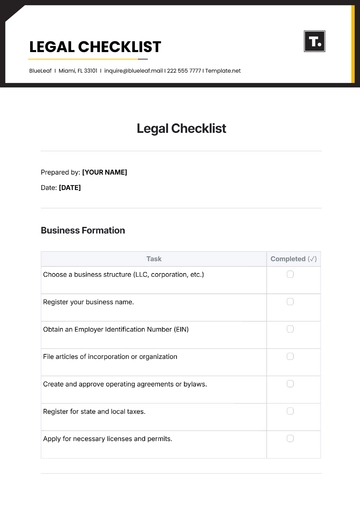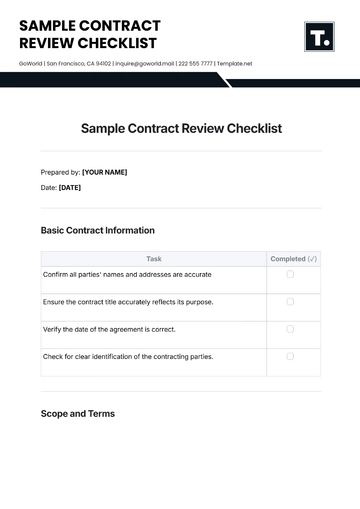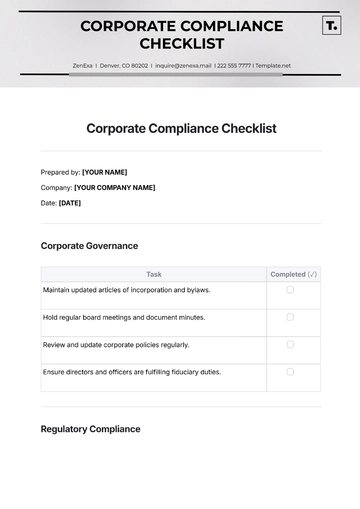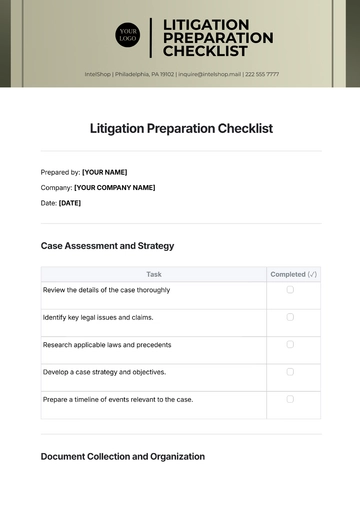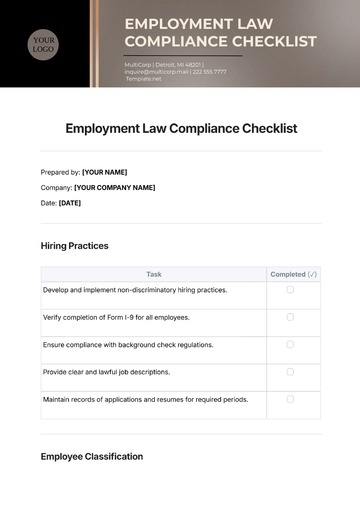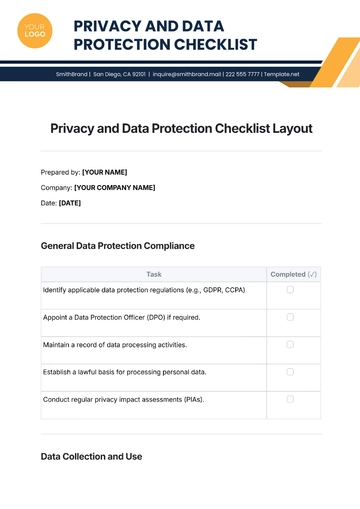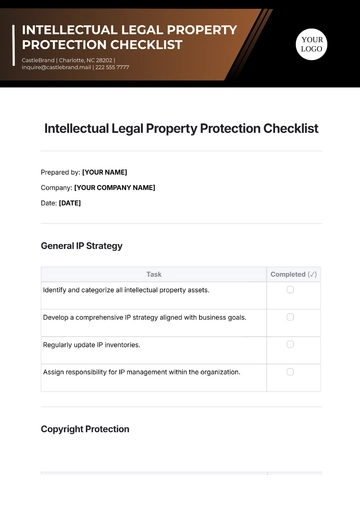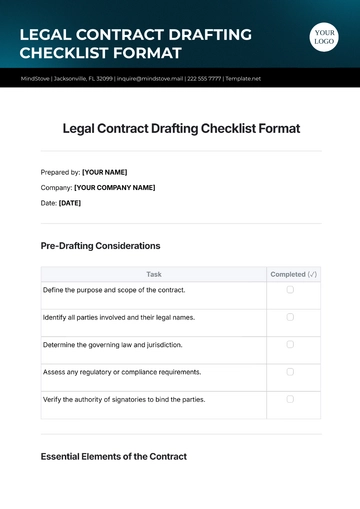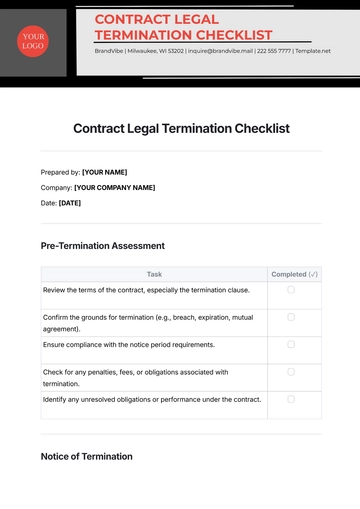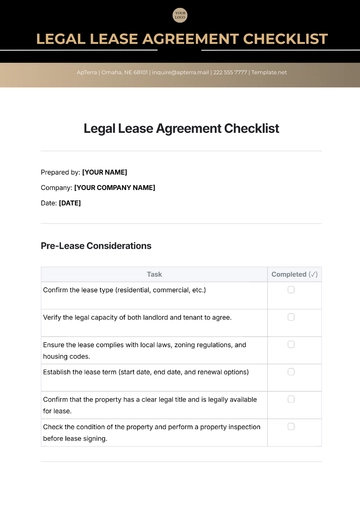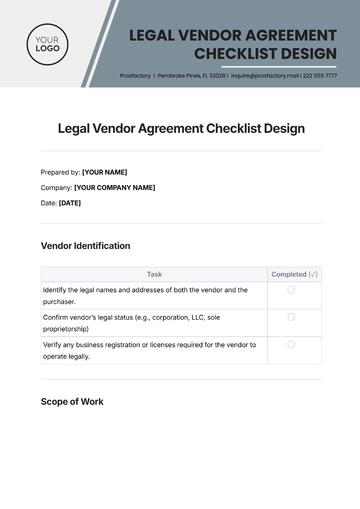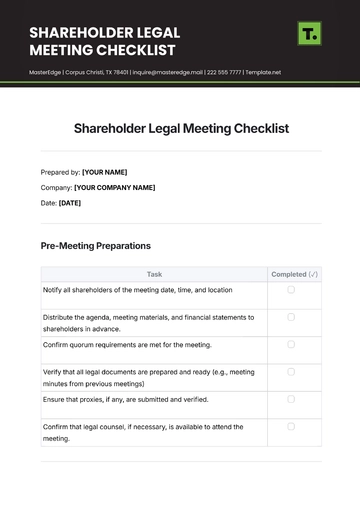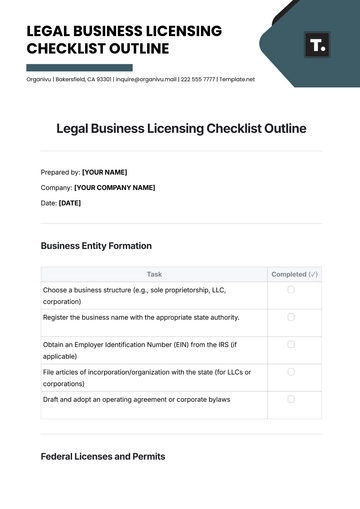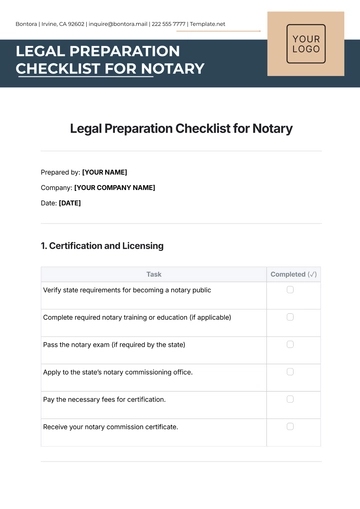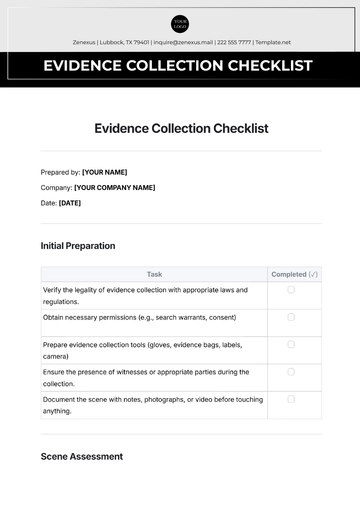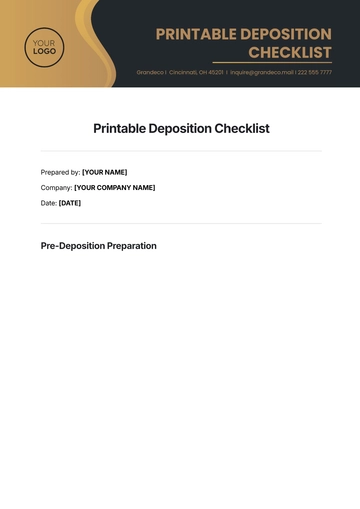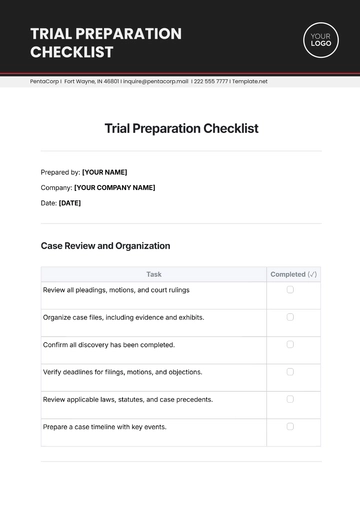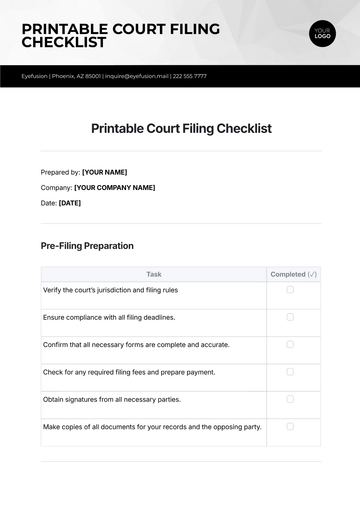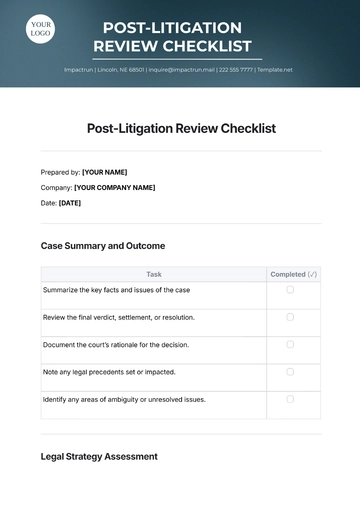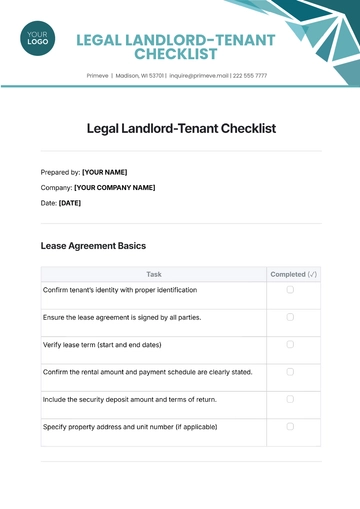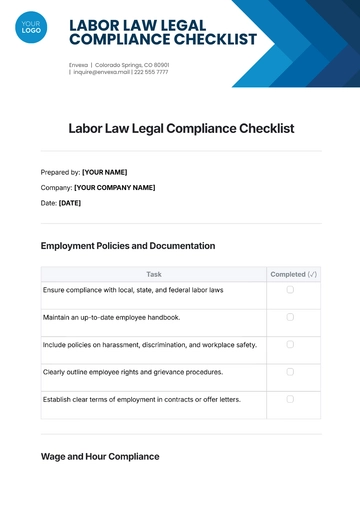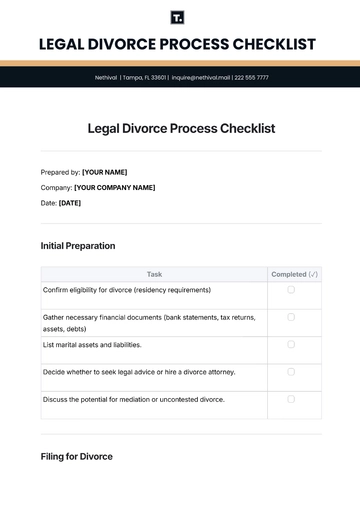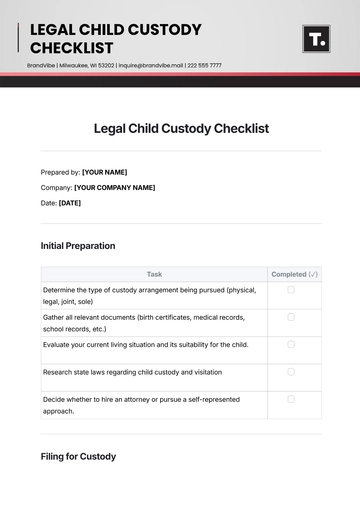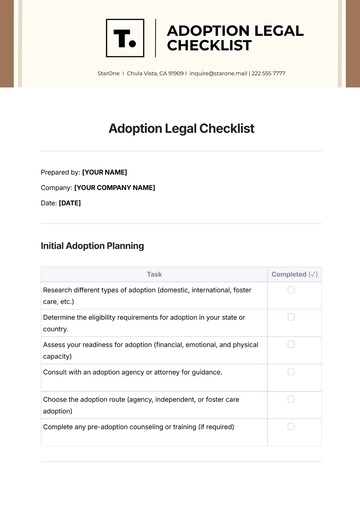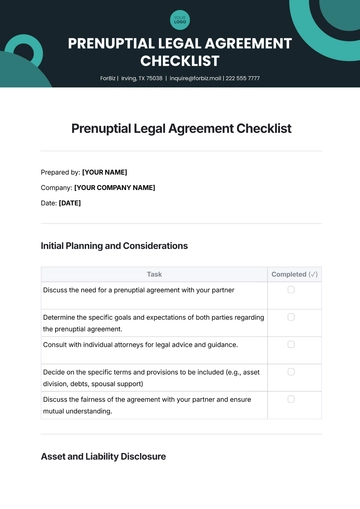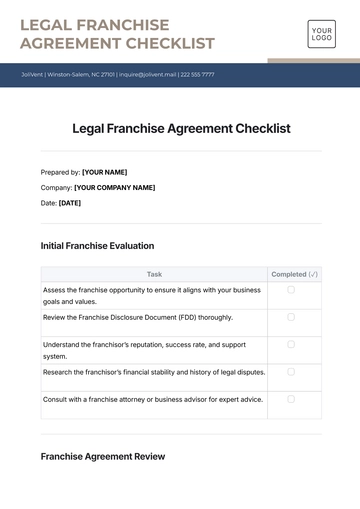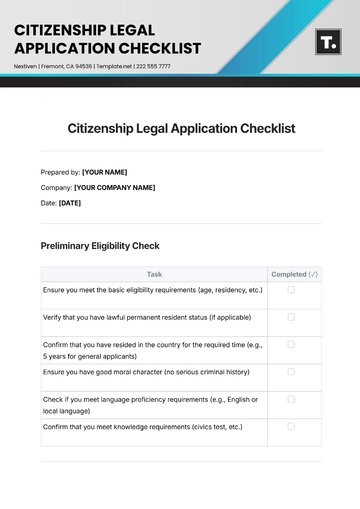Free Law Firm Audit Checklist
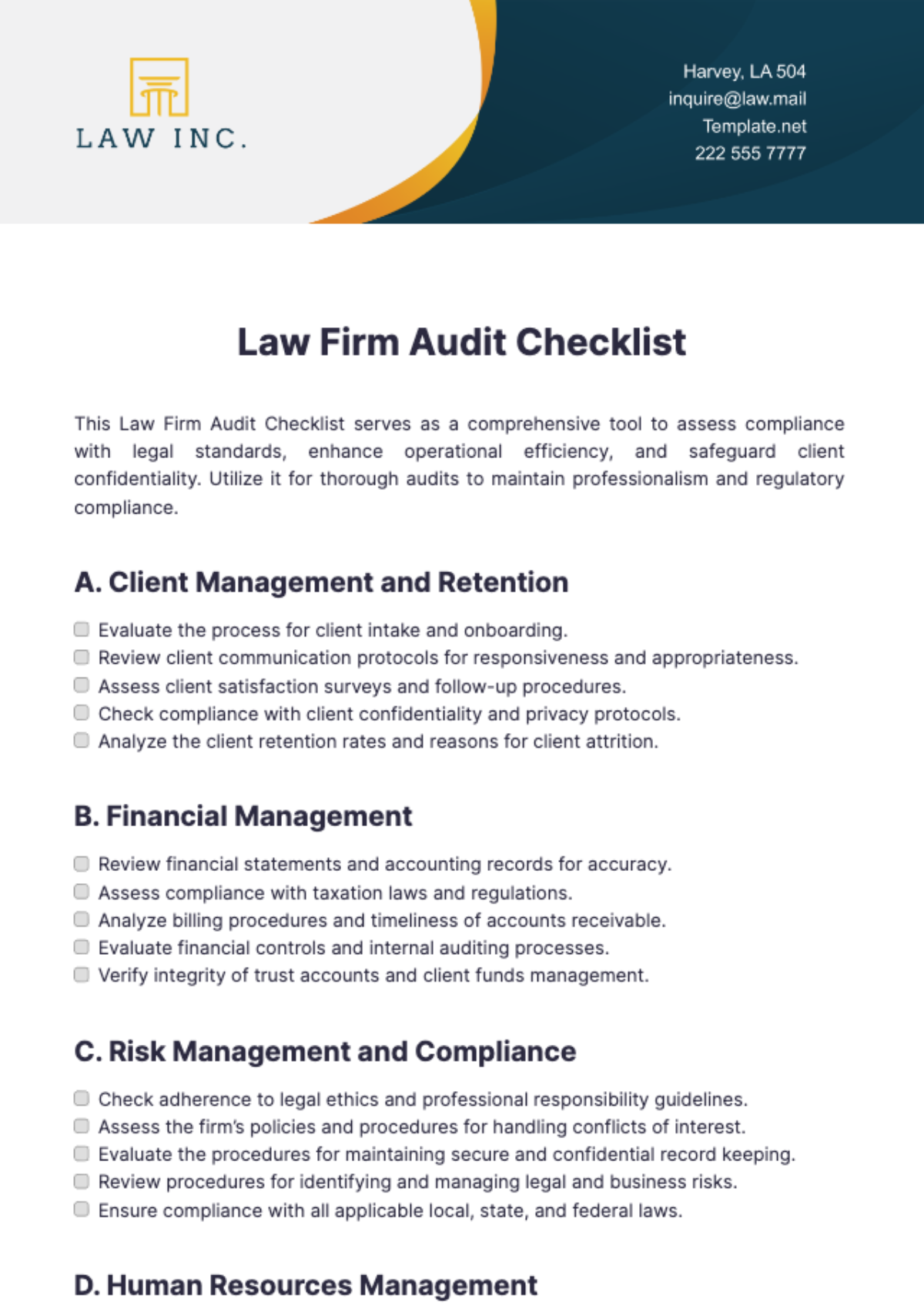
This Law Firm Audit Checklist serves as a comprehensive tool to assess compliance with legal standards, enhance operational efficiency, and safeguard client confidentiality. Utilize it for thorough audits to maintain professionalism and regulatory compliance.
A. Client Management and Retention
Evaluate the process for client intake and onboarding.
Review client communication protocols for responsiveness and appropriateness.
Assess client satisfaction surveys and follow-up procedures.
Check compliance with client confidentiality and privacy protocols.
Analyze the client retention rates and reasons for client attrition.
B. Financial Management
Review financial statements and accounting records for accuracy.
Assess compliance with taxation laws and regulations.
Analyze billing procedures and timeliness of accounts receivable.
Evaluate financial controls and internal auditing processes.
Verify integrity of trust accounts and client funds management.
C. Risk Management and Compliance
Check adherence to legal ethics and professional responsibility guidelines.
Assess the firm’s policies and procedures for handling conflicts of interest.
Evaluate the procedures for maintaining secure and confidential record keeping.
Review procedures for identifying and managing legal and business risks.
Ensure compliance with all applicable local, state, and federal laws.
D. Human Resources Management
Examine policies for employee hiring, training, and performance evaluations.
Check compliance with labor laws and employment regulations.
Analyze employee turnover rates and reasons for turnover.
Review employee satisfaction and feedback mechanisms.
Assess training and development opportunities for staff.
E. Technology and Information Security
Review security protocols for protecting sensitive client data.
Evaluate the effectiveness of IT systems in supporting firm operations.
Check systems for backup, data recovery, and business continuity.
Assess compliance with cybersecurity laws and best practices.
Review the firm’s policies for technology updates and maintenance.
- 100% Customizable, free editor
- Access 1 Million+ Templates, photo’s & graphics
- Download or share as a template
- Click and replace photos, graphics, text, backgrounds
- Resize, crop, AI write & more
- Access advanced editor
Ensure comprehensive evaluations with the Law Firm Audit Checklist Template from Template.net. This editable and customizable template outlines critical aspects to review during a law firm audit, including compliance with legal standards, financial records accuracy, and operational procedures. Editable in our Ai Editor Tool, it's designed to assist in conducting thorough audits that help identify areas for improvement, ensure regulatory compliance, and maintain the integrity of the firm’s practices.
You may also like
- Cleaning Checklist
- Daily Checklist
- Travel Checklist
- Self Care Checklist
- Risk Assessment Checklist
- Onboarding Checklist
- Quality Checklist
- Compliance Checklist
- Audit Checklist
- Registry Checklist
- HR Checklist
- Restaurant Checklist
- Checklist Layout
- Creative Checklist
- Sales Checklist
- Construction Checklist
- Task Checklist
- Professional Checklist
- Hotel Checklist
- Employee Checklist
- Moving Checklist
- Marketing Checklist
- Accounting Checklist
- Camping Checklist
- Packing Checklist
- Real Estate Checklist
- Cleaning Checklist Service
- New Employee Checklist
- Food Checklist
- Home Inspection Checklist
- Advertising Checklist
- Event Checklist
- SEO Checklist
- Assessment Checklist
- Inspection Checklist
- Baby Registry Checklist
- Induction Checklist
- Employee Training Checklist
- Medical Checklist
- Safety Checklist
- Site Checklist
- Job Checklist
- Service Checklist
- Nanny Checklist
- Building Checklist
- Work Checklist
- Office Checklist
- Training Checklist
- Website Checklist
- IT and Software Checklist
- Performance Checklist
- Project Checklist
- Startup Checklist
- Education Checklist
- Home Checklist
- School Checklist
- Maintenance Checklist
- Planning Checklist
- Manager Checklist
- Wedding Checklist
- Vehicle Checklist
- Travel Agency Checklist
- Vehicle Inspection Checklist
- Interior Design Checklist
- Backpacking Checklist
- Business Checklist
- Legal Checklist
- Nursing Home Checklist
- Weekly Checklist
- Recruitment Checklist
- Salon Checklist
- Baby Checklist
- Equipment Checklist
- Trade Show Checklist
- Party Checklist
- Hospital Bag Checklist
- Evaluation Checklist
- Agency Checklist
- First Apartment Checklist
- Hiring Checklist
- Opening Checklist
- Small Business Checklist
- Rental Checklist
- College Dorm Checklist
- New Puppy Checklist
- University Checklist
- Building Maintenance Checklist
- Work From Home Checklist
- Student Checklist
- Application Checklist
